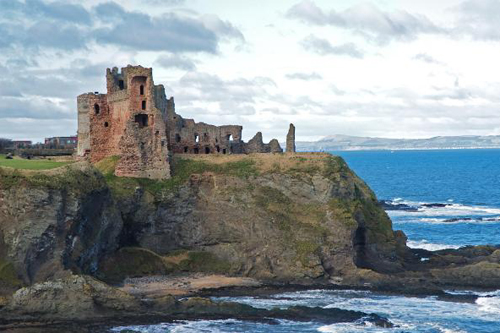HISTORIC Scotland has unveiled a five-year plan to protect important buildings from climate change.
The plans will fall in line with Scottish Government carbon emissions reduction targets, which are amongst the most ambitious in the world.
The new Climate Change Action Plan tackles a wide range of challenges presented by the impacts of rising sea levels, increased storm events and heavier rain on historic landscapes, buildings, archaeology and the tourist industry.
Sandstone properties, such as Tantallon Castle are particularly at risk from climate change
Figures show that Scotland’s climate is already changing, with average rainfall rising by more than 20% since the 1960s.
Historic buildings are particularly susceptible to increased rainfall and extremes of wetting and drying cycles, which may lead to accelerated decay.
Historic Scotland Chief Executive Ruth Parsons said: “Climate change is a very real threat facing Scotland’s built and natural environment.
“We have already seen significant changes in our weather in recent decades, and this is set to continue, or even increase, throughout this century. It is imperative to our economy that we start taking action immediately.
“Historic Scotland has built up expertise to counter the threat of climate change, and gained useful knowledge from tackling the impacts of coastal and wind erosion at some of our most popular and significant sites.
“Closely aligned with these efforts is our commitment to reducing greenhouse gas emissions. We aim to meet the ambitious targets set by the Scottish Government and cut carbon emissions by 42% by 2020, based on 1990 levels.
“We will share the research we are doing and encourage others to identify the actions they can take to reduce their own emissions, and help Scotland move towards a low carbon economy.”
The strategic aims of Historic Scotland’s Climate Change Action Plan focus on reducing energy use in the agency’s buildings and improving the carbon efficiency of its operations.
Innovative techniques have already proved successful – for example, using sheep wool to help insulate the agency’s Edinburgh headquarters, combined with other practical measures such as replacing more than 500 light bulbs in Glasgow Cathedral with low energy versions to reduce power consumption.


